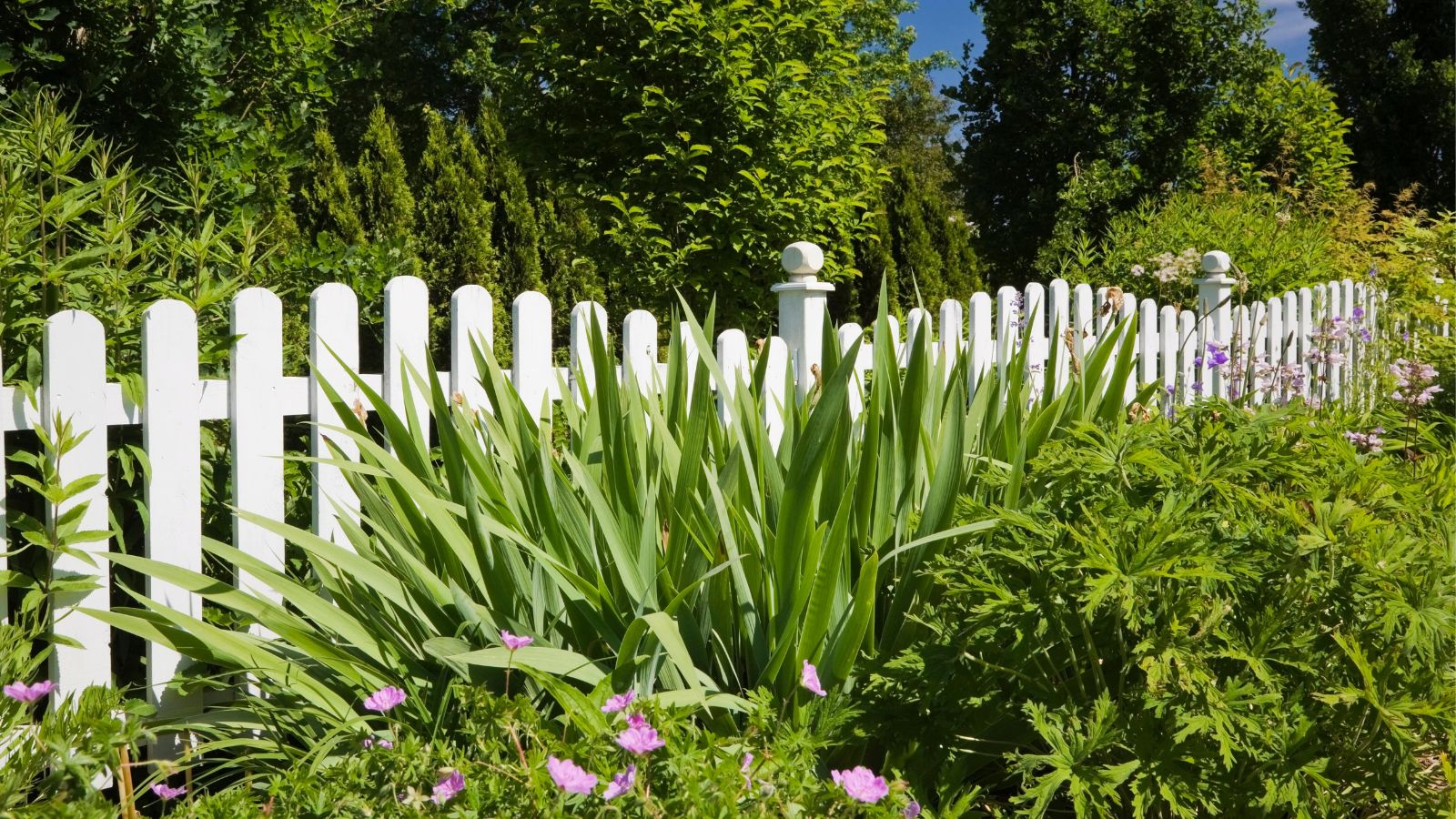How to fix a leaning fence
It's likely with the fall winds that you will need to know how to fix a leaning fence (at the very least). This easy step-by-step tells you how


With fall comes winds and storms, which means you may need to know how to fix a leaning fence. Luckily, there’s usually a simple and easy way to put it right.
Whilst some fences can withstand many years of wear, others, perhaps due to extreme weather or pet damage, may start to lean or sag. In most cases this will have an impact on your privacy and can damage plants. Ultimately a leaning fence is not ideal if you want to maintain a smart, well kept outdoor area – so maintaining your garden fence ideas is a must.
So whether you are a competent DIY-er who already knows how to build a fence for your backyard or a bit of a novice looking for advice, you will want quick and easy solutions for fixing a leaning fence. Here, landscaping experts offer their best tips and advice.
How to fix a leaning fence
First it's important to find out why your fence is leaning.
1. Why is my wooden fence leaning?
A leaning fence may be the outcome of shallow post placement, meaning the holes in the ground are not deep enough, causing the posts to move. Aging materials can also cause problems that lead to a leaning fence. However, the most common cause is likely to be extreme weather conditions, such as wind and heavy rain that impacts not only the fence itself, but also the ground.
‘Fluctuations in temperature or moisture, especially with the changing of the seasons, can cause the fence panel or even the ground below it to expand, contract, and shift, leading to breakage.’ explains Liz Baessler from US-based gardening website, Gardening Know How.
‘Start by pushing each against each fence post and notice how much or how little it gives’, explains a spokesperson for Colorado-based Blicks Fencing. ‘You should encounter strong resistance, indicating a sturdy base’.
Design expertise in your inbox – from inspiring decorating ideas and beautiful celebrity homes to practical gardening advice and shopping round-ups.
If you don't have a study base, start digging around the base so you can see if there is evidence of rot or invading tree roots.
2. Deal with damaged or rotten fence posts
When it comes to a rotting fence post you have two clear options. ‘You can place another, shorter post up against the rotting post and either tie or bolt the two together,’ explains a spokesperson for Blicks Fencing.
Or alternatively, dig up and replace the fence post. Start by removing all the soil from around the bottom of the fence post, then dig down to the proper post hole depth. The fence post's hole should be three times its width, and a third of the height of the fence panel deep (so a 6ft fence panel requires a post that's in a hole 2ft deep).
Align the placement of the new post with the others by using a level and tying a string to each post. Finally, pour a new concrete footing, sloping the concrete away from the post for best drainage. You can then reattach the wood panels of the fence.
3. Address wooden fence panels
If there is any splitting wood or rotten areas of the timber, this could be another cause of a leaning fence. In this instance, you will need to replace the wooden fence panel.
Firstly remove the damaged panels then, using a spirit level, check if the fence is placed correctly between the posts. To secure the fence to the posts, hammer nails into the pilot holes on the post. Ensure you drive the nails in at an angle.
If the fence panel has minor damage and you’d rather not replace the entire panel, you can try using a metal bracket to reattach it to the post.
4. Fix damaged arris rails
An arris rail is a wooden post that runs horizontally across the rear of the wooden panel. If this has been damaged due to heavy wind or rain, then you can simply reattach it using a metal bracket. In extreme circumstances you may need to replace the arris rail completely.
How deep should fencing posts be?
Fencing posts should be into a hole in the ground that's roughly a third of the height of the fence panel deep. So, a 6ft fence panel requires a post that's in a hole 2ft deep.
Often, invading tree roots or changes in the weather causes the soil beneath the posts to move. ‘If the ground underneath has shifted, you can remove the offending panel and posts and dig out the area’, explains Liz Baessler from Gardening Know How. ‘Then put the posts back in their place, making sure that they’re level, and fill in the dug out area with soil, packing it down tightly,’ she confirms.
How far apart should posts be on a fence?
If you are still wondering why your fence is leaning, then it could be due to the spacing of your fence posts. Perhaps you need extra posts if your fence posts are spaced too far apart.
The distance between each post depends on the size of each wooden panel and the overall length of the fenced area you are covering and the type of fencing. However most wooden fences have posts 8ft to 12ft apart.
If you have determined that this is the cause, then you can add in a new fence post and replace the damaged panels in between.
How can I stop my fence posts from leaning?
Assuming your fence posts are deeply buried and your posts are the correct distance apart, you may wonder why your fence posts continue to lean year-after-year. In order to keep your fence in optimum conduction, avoid leaning anything against the wood panels as this will cause them to weaken and potentially split. Also, ensure you have used pressure treated timber – this means it will be more resilient to the elements. Finally, remember to use a waterproofing product such as a wood stain every two years or so – this will help protect the panels from rot and other problems.

Steph Hendries is a freelance journalist who has contributed to many different interiors websites including Homes & Gardens, Ideal Home and Livingetc. She has also worked on a range of social content for property brands such as Zoopla and Boomin. Steph writes for Homes & Gardens Solved section, concentrating on DIY, how to, cleaning and organizing content.